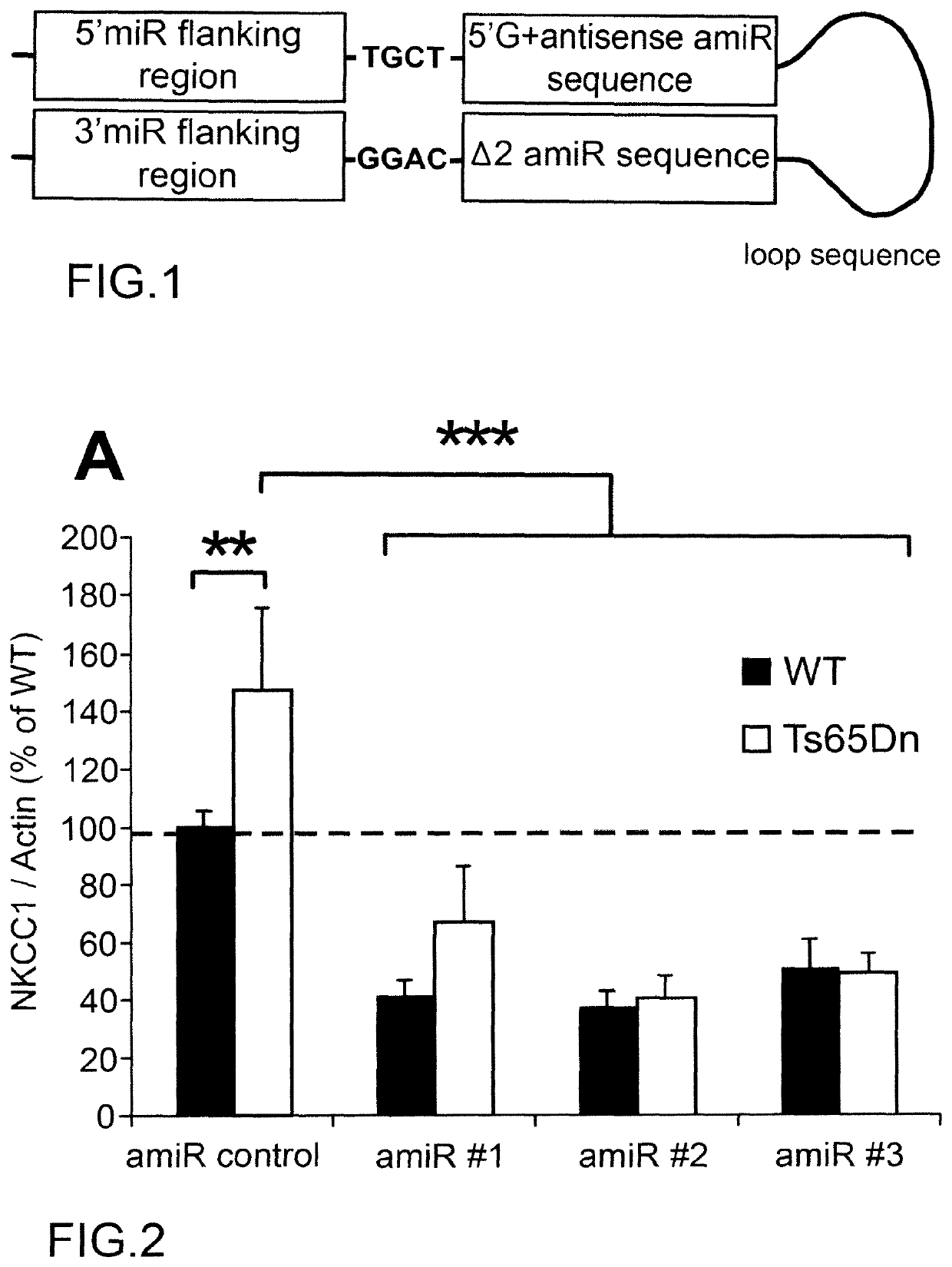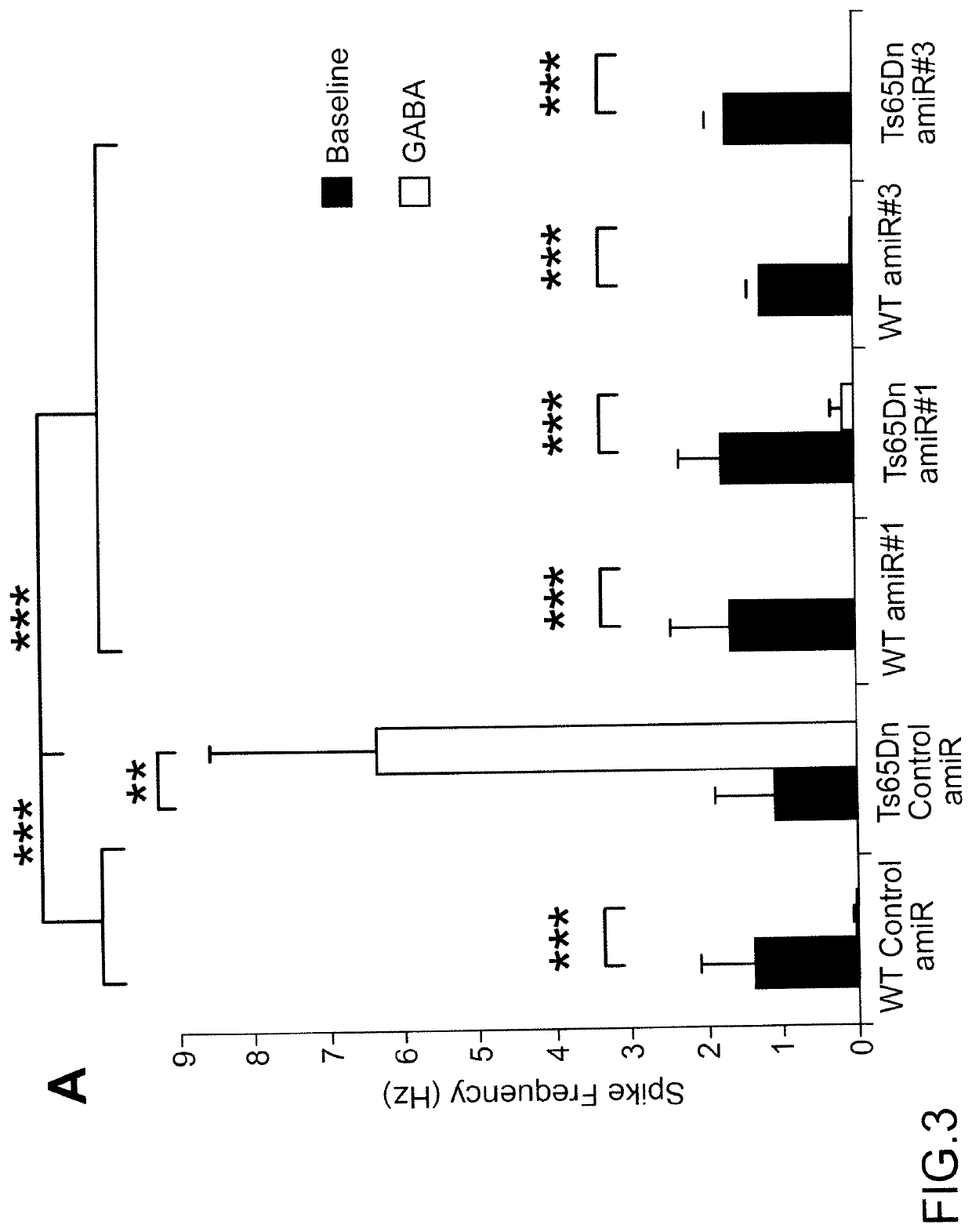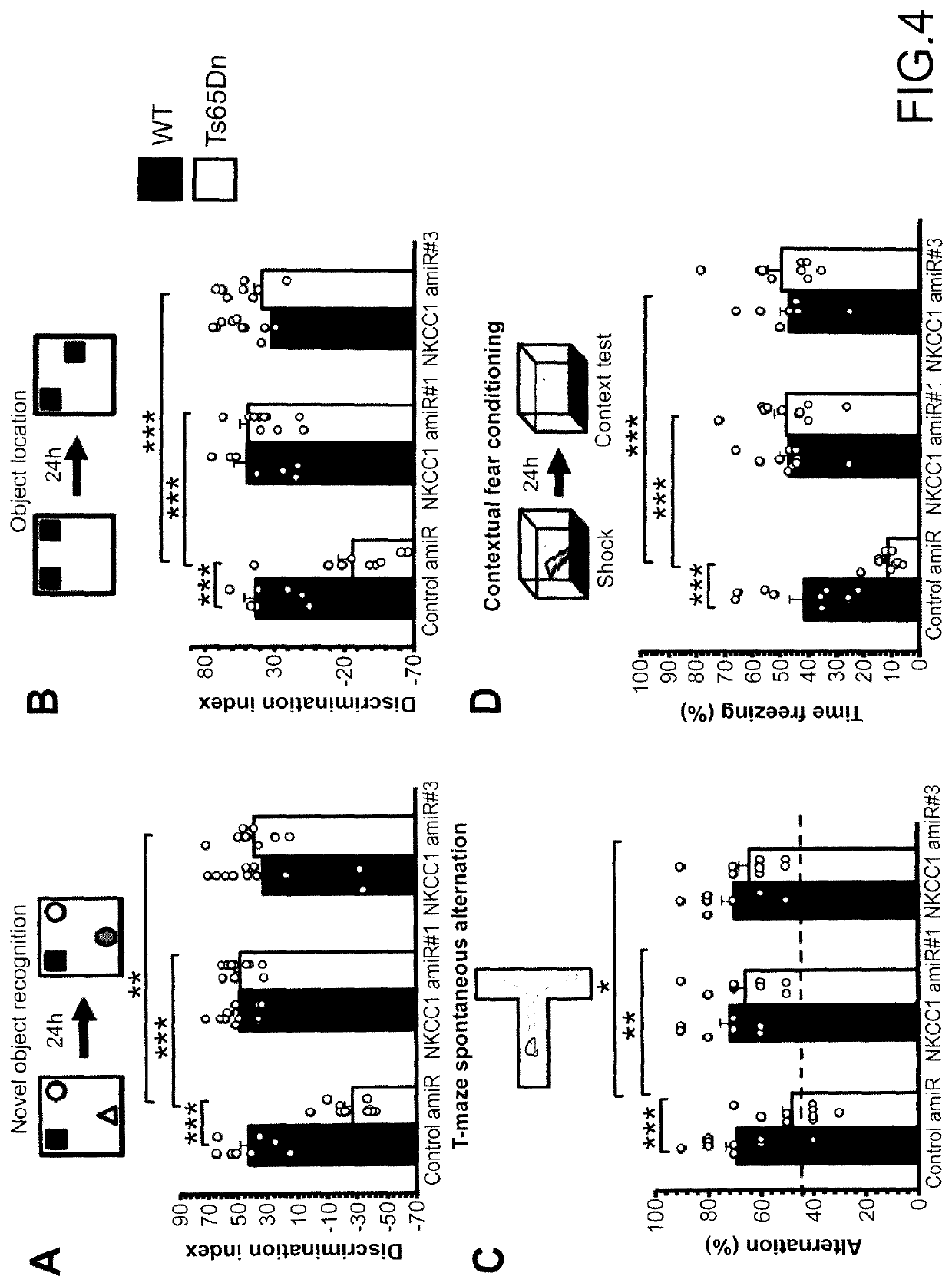Method for reducing the expression of nkcc1 in a subject
a technology of nkcc1 and expression, applied in the field of vectors and pharmaceutical compositions, can solve the problems of excessive diuresis and jeopardizing treatment compliance, and achieve the effect of reducing the expression of nkcc1
- Summary
- Abstract
- Description
- Claims
- Application Information
AI Technical Summary
Benefits of technology
Problems solved by technology
Method used
Image
Examples
example 1
[0042]In Ts65Dn neurons, the intracellular chloride concentration is elevated leading to depolarizing and possibly excitatory actions of GABA. We design an RNAi strategy with amiR to reduce the expression of NKCC1 in neurons. Using primary neuronal cultures from Ts65Dn mice, a well-known mouse model of Down syndrome, we found that our amiR strategy with viral vectors was able to reduce the expression of NKCC1 protein. Reducing NKCC1 protein expression by amiR restored the inhibitory action of GABA in Ts65Dn neurons similar to wild type (WT) neurons. Furthermore, we found that in vivo viral delivery of amiR molecules in the hippocampus of Ts65Dn mice rescued the cognitive deficits in four different behavioral tests for learning and memory. This approach is therefore efficient in vitro and in vivo to restore physiological activity and behavioral parameters in DS.
example 2
[0043]amiR sequences reported in Table B are all predicted based on the human NKCC1 (hNKCC1) DNA sequence (NM_001046.2) by using the online tool BLOCK-iT™ RNAi Designer (algorithm 1, TABLE A). By using 8 additional algorithms (algorithms 2-9, listed in TABLE A), we predicted a number of additional RNAi sequences that in some case corresponded to those reported in table B obtained with algorithm 1. Each of the sequences predicted by algorithm 1 (TABLE B) was scored based on the number of times these sequences ± 4 nucleotides was predicted by the algorithms 2-9. Therefore, sequences listed in TABLE B have the highest probability to bind and silence NKCC1.
example 3
[0044]The silencing efficacy of 78 out of 89 amiR sequences reported in Table B against hNKCC1 was evaluated with a dual-luciferase hNKCC1 sensor (FIGS. 6 and 7). Human H293T kidney cells were grown in 96-well plates and transfected with each amiR sequence together with hNKCC1 dual-luciferase plasmid sensor with Lipofectamnine2000 (Thermo). After 48 hours the ratio between Renilla luciferase (RLuc) and Firefly luciferase (FLuc) was measured with Dual-luciferase assay (Promega) on a Victor3 multiplate reader (PerkinElmer). For each transfected amiR sequence the decrease in RLuc / FLuc ratio with respect to samples transfected with control amiR plasmid indicates the degree of hNKCC1 knockdown. The silencing activity of different amiR sequences against hNKCC1, expressed as average RLuc / Fluc ratio (obtained from 4 independent transfections), is reported in TABLE C, together with the corresponding P value obtained with Student's t-test versus samples transfected with control amiR plasmid.
PUM
| Property | Measurement | Unit |
|---|---|---|
| systolic blood pressure | aaaaa | aaaaa |
| systolic blood pressure | aaaaa | aaaaa |
| concentration | aaaaa | aaaaa |
Abstract
Description
Claims
Application Information
 Login to View More
Login to View More - R&D
- Intellectual Property
- Life Sciences
- Materials
- Tech Scout
- Unparalleled Data Quality
- Higher Quality Content
- 60% Fewer Hallucinations
Browse by: Latest US Patents, China's latest patents, Technical Efficacy Thesaurus, Application Domain, Technology Topic, Popular Technical Reports.
© 2025 PatSnap. All rights reserved.Legal|Privacy policy|Modern Slavery Act Transparency Statement|Sitemap|About US| Contact US: help@patsnap.com



